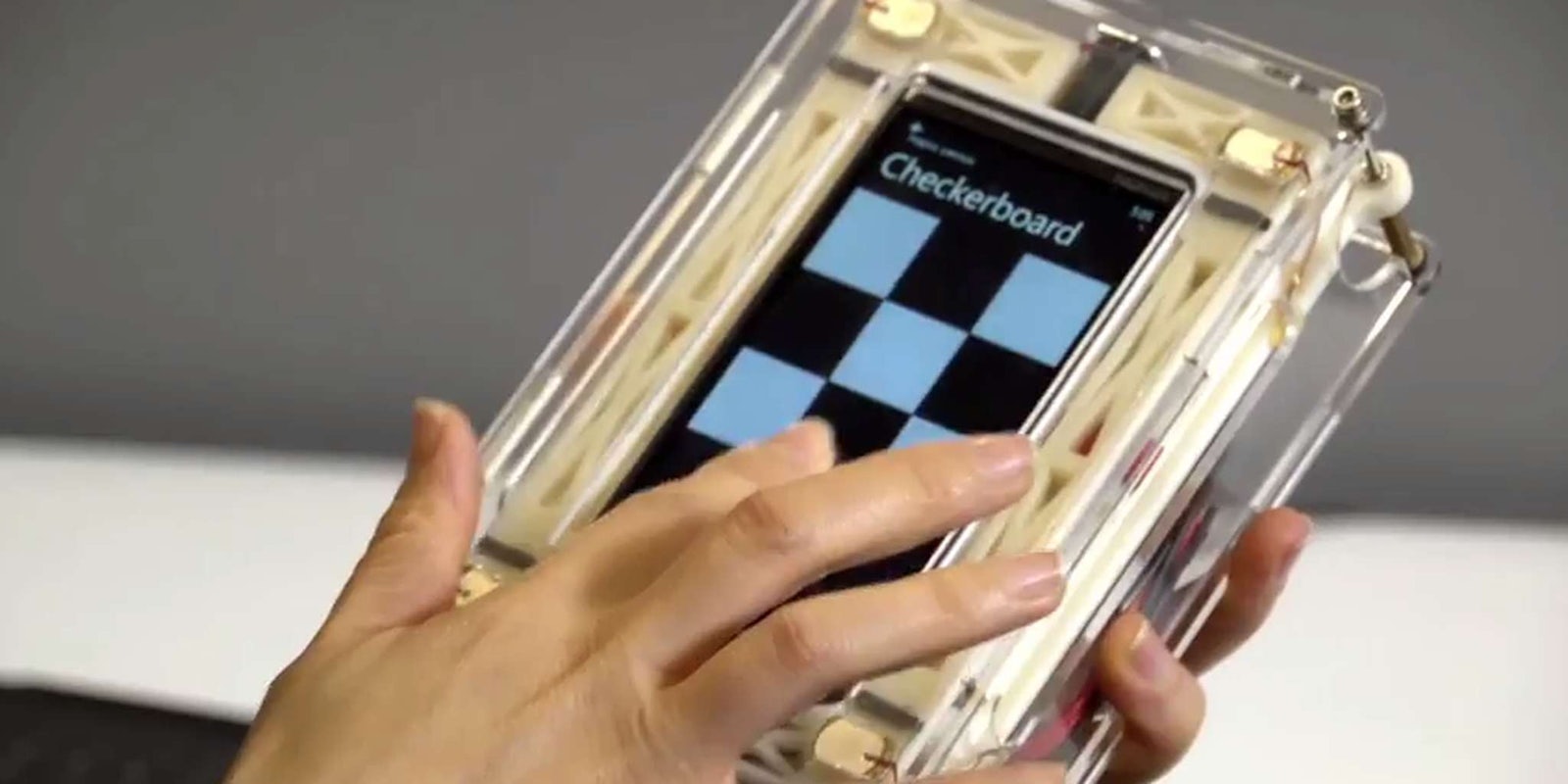Your mobile phone is already smart, but do you want it to be touchy-feely as well? Microsoft thinks you will, and that’s why it’s pouring resources into researching new forms of haptic feedback. If your phone has a vibration feature, you’ve already experienced a very basic form of haptic feedback, but more advanced types—like a touchscreen that can push back against your finger—may be just around the corner.
In a new video from Microsoft Research, Senior Researcher Hong Tan shows off the progress being made toward a future where tapping your finger on a touchscreen won’t be such a one-way experience.
Using piezoelectric material that can alter its shape, the touchscreen is capable of bending ever so slightly to provide a tactile response to touch. To prove that such physical feedback is beneficial, Microsoft tested it with various users. The results showed that the haptic feedback allowed users to type faster and more accurately than without it.

The researchers have also created a prototype that produces a different feeling depending on where on the screen the user touches. One area retains the somewhat sticky feeling of a normal glass touchscreen, while while another section feels slippery. This is accomplished by vibrating the topmost layer of glass extremely rapidly using piezoelectric actuators, trapping a small amount of air between the user’s finger and the surface which acts as a cushion.
This technology is really still in its infancy, and although prototypes use present-day devices, the modifications needed to enable advanced haptic feedback make them considerably more bulky. But scientists are great at taking really innovative, really big things and shrinking them down, and the promise of a screen that can actually interact with you is just too cool to ignore.


